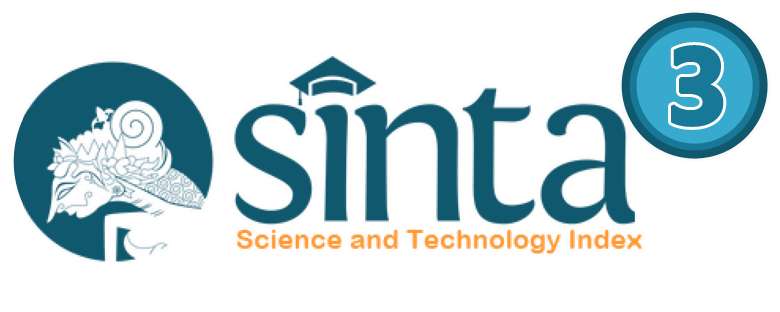PENGARUH PENGGUNAAN MEDIA PEMBELAJARAN AUDIO VISUAL TERHADAP PRESTASI BELAJAR BAHASA ARAB SISWA KELAS VIII MTS AL-HIKMAH KAJEN MARGOYOSO PATI TAHUN PELAJARAN 2015/2016
Abstract
The essay, Department of Arabic Language Education, Education Faculty, Institute of Pesantren Mathali'ul Falah Pati. The background of this research is the learning results is unsatisfied, which are caused by the problem of learning in school using simple media so that students do not understand how to speak Arabic. One of the attempts to overcome such a situation is using an audio-visual media, which is integrated in the learning process, because the the function of media in addition to the stimulus of a presenter of information, attitudes, and others, as well as to improve harmony in the reception of information. With the advantages of using this audio-visual media is really appropriate to use in learning Arabic. This study aims to determine the using an audio-visual media in class VIII MTs Al-Hikmah Kajen Margoyoso Pati school year 2015/2016, to determine Arabic learning achievement in class VIII MTs Al-Hikmah Kajen Margoyoso Pati school year 2015/2016, and to determine the effect of the using an Audio Visual media to the achievement of learning Arabic in class VIII MTs Al-Hikmah Kajen Margoyoso Pati Academic Year 2015/2016. This essay is a qualitative study using a sample of 30 students. The technique of collecting data is using questionnaires and documentation. The technique of data analysis is using normality test and linearity test. The results shows there is an association between the variable x to variable y due to the using of audio-visual learning media: χ2 count <χ2 table (28.92 <11.07), while the achievement of Arabic learning: χ2 count <χ2 table (12.75 <11 , 07). Linearity test of using audio-visual learning media and Arabic learning achievement of students obtained F count<F table (0.5 <0.52), means linear patterned. Then from the calculation of data analysis test, the value of rxy = 0.61 and t = 4.75, t count> ttable (4.75> 2.02), meaning there is a positive and significant correlation between the variables X to Y. The regression equation obtained is y = 0.17 + 1.02 X, which means that each increase in the value of the use of audio-visual learning media by 1 point, it will be followed by increases in the value of learning Arabic student achievement at 1.02. For the calculation of the value F, obtained > F table (0.52> 4.10), it means regression coefficient is significant. While the value of the coefficient of determination obtained R2 = 0.37, indicating that 37% of student achievement is affected by the use of audio-visual learning media, while the remaining 63% is determined by other factors.
Downloads
References
Azhar Arsyad, Media Pengajaran, Jakarta: PT. RajaGrafindo Persada, 2000.
Basyiruddin Usman, Media Pembelajaran, Jakarta: Ciputat Pers, 2002.
Chabib Thoha, PBM-PAI di Sekolah, Yogyakarta: Pustaka Pelajar, 1998.
Departemen Pendidikan dan Kebudayaan, Kamus Besar Bahasa Indonesia, Jakarta: Balai Pustaka, 1992.
Hartono, Statistik untuk Penelitian, Yogyakarta” Pustaka Pelajar, 2004.
Husain Umar, Metode Riset Perilaku Organisai, Jakarta: Gramedia Pustaka Utama, 2003.
Koenjaraningrat, Metode-metode Penelitian Masyarakat, Jakarta: PT Gramedia, 1991.
M. Arifin, Kapita Selekta Pendidikan, Semarang: Toha Putra, 1983.
Moh.Uzer Usman, Menjadi Guru Profesional, Bandung: Remaja Rosdakarya, 2002.
Muhibbin Syah, Psikologi Belajar, Bandung: PT. Raja Grafindo Persada, 2003.
____________, Psikologi Pendidikan Denagn Pendekatan Baru Bandung: PT. Remaja Rosda Karya, 2000.
Mushtofa Al-Gholayaini, Jami’ ad Durus al Arobiyyah, Bairut: Asy’ariyah, 1973.
Mustaqim, Psikologi Pendidikan, Yogyakarta: Pustaka Pelajar, 2001.
Nana Sujana, Dasar-Dasar Belajar Mengajar, Bandung: Sinar Baru Algesindo, 1987. Oemar Hamalik, Media Pendidikan, Bandung; PT Cipta Aditya Bakti, 1994.
Rahardjo, Media Pendidikan, dalam Chabib Thoha & Abdul Mu'ti, PBM-PAI di Sekolah Eksistensidan Proses Belajar Mengajar Pendidikan Agama Islam, Yogyakarta: Pustaka Pelajar, 1998.
Riduwan dan Sunarto, Pengantar Statistika, untuk Penelitian Pendidikan, Sosial, Ekonomi Komunikasi, dan Bisnis, Bandung: Alfabeta, 2007.
S. Margono, Metodologi Penelitian Pendidikan, Jakarta: PT. Rineka Cipta, 1996.
Sanafiah Faisal,, Metodologi Penelitian Pendidikan, Surabaya: Usaha Nasional, 1982.
Sardiman, Interaksi dan Motivasi Belajar Mengajar, Jakarta: PT. Rajagrafindo Persada, 1996.
Slameto, Belajar Dan Faktor-Faktor Yang Mempengaruhinya, Jakarta: PT. Rineka Cipta, 2003.
Sugiyono, Metode Penelitian Administrasi, Bandung; Alfabeta, 2008.
Suharsimi Arikunto,, Prosedur Penelitian Suatu Pendekatan Praktek, Jakarta: Rineka Cipta, 1998. Sumadi Suryabrata, Psikologi Pendidikan, Jakarta: PT. Rajagrafindo Persada, 2001.
Sutrisno Hadi, Analisis Regresi, Yogyakarta: Andi Offset, 2000.
¬¬___________, Metodologi Research Jilid 1, Yogyakarta: Andi Offset, 2000.
___________, Metodologi Research, Jilid 2, Yogyakarta: Andi Offset, 2000.
Syaiful Bahri Djamarah & Aswan Zain, Strategi Belajar Mengajar, Jakarta: Rineka Cipta, 1995.
Tim Penyusun Buku Pedoman Bahasa Arab, Pedoman Pengajaran Bahasa Arab, Jakarta: Proyek Pengembangan Sistim Pengembangan Agama Depag RI, 1974.
Tim Penyusun Kamus Pusat Bahasa, Kamus Besar Bahasa Indonesia, Jakarta: Balai Pustaka, 2003.
TIM Penyusun KBK Bahasa Arab MTs, Kurikulum dan Hasil Belajar, Jakarta: Depag RI, 2003. Winarno Surahmad, Pengantar Penelitian Ilmiah Dasar Metode dan Tehnik, Bandung: Tarsito, t.th.
Pemberitahuan Hak Cipta
Penulis yang menerbitkan bersama Islamic Review: Jurnal Riset dan Kajian Keislaman menyetujui ketentuan berikut:
- Penulis mempertahankan hak cipta dan memberikan jurnal hak publikasi pertama dengan karya yang dilisensikan secara bersamaan di bawah Lisensi Creative Commons Attribution-ShareAlike 4.0 International License (CC BY-SA 4.0) yang memungkinkan orang lain untuk berbagi karya dengan pengakuan kepenulisan karya dan publikasi awal dalam jurnal ini.
- Penulis dapat membuat pengaturan kontrak tambahan yang terpisah untuk distribusi non-eksklusif dari versi jurnal yang diterbitkan dari karya tersebut (misalnya, mempostingnya ke repositori institusi atau menerbitkannya dalam sebuah buku), dengan pengakuan awal publikasi di jurnal ini.
- Penulis diizinkan dan didorong untuk memposting karya mereka secara online (misalnya, di repositori institusional atau di situs web mereka) sebelum dan selama proses pengiriman, karena dapat menghasilkan pertukaran yang produktif, serta kutipan lebih awal dan lebih besar dari karya yang diterbitkan.

Karya ini dilisensikan di bawah Creative Commons Attribution-ShareAlike 4.0 International License.










